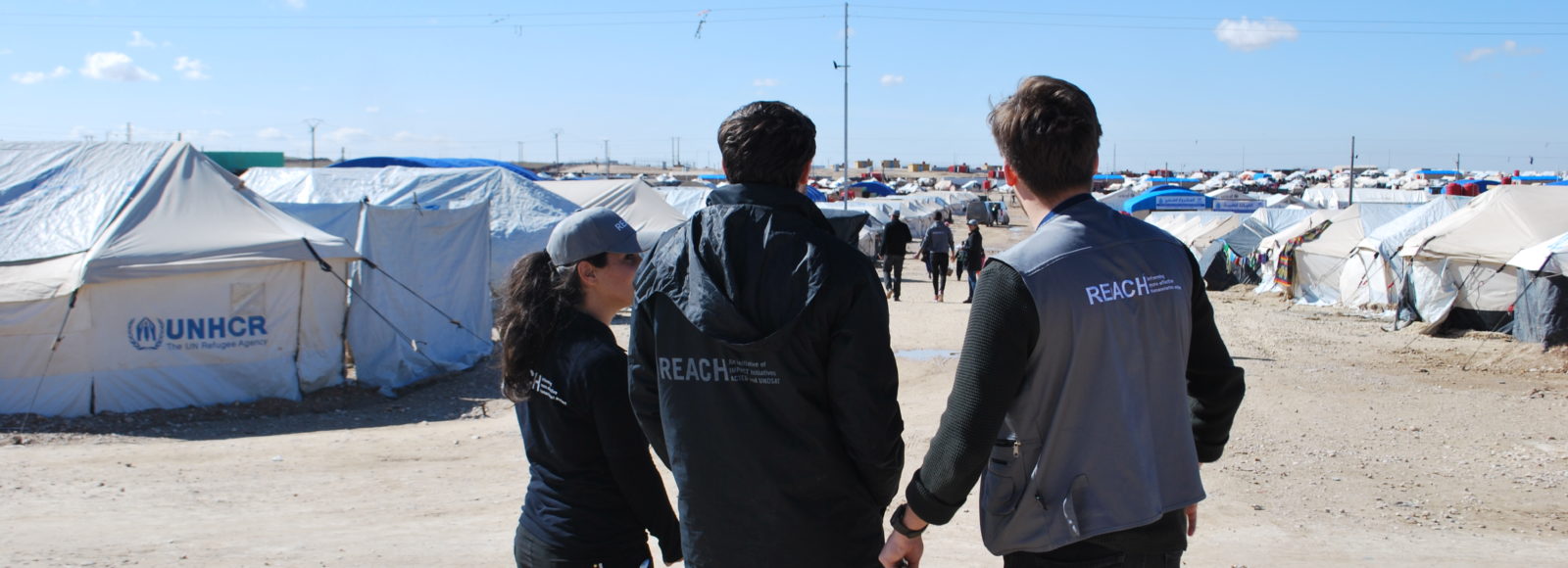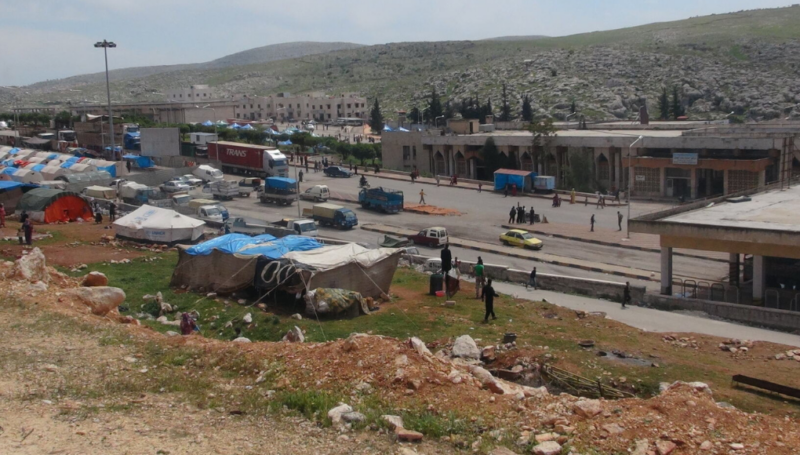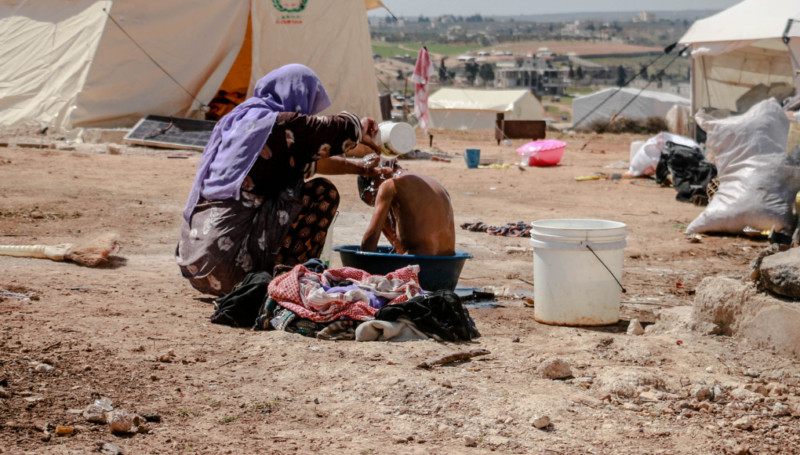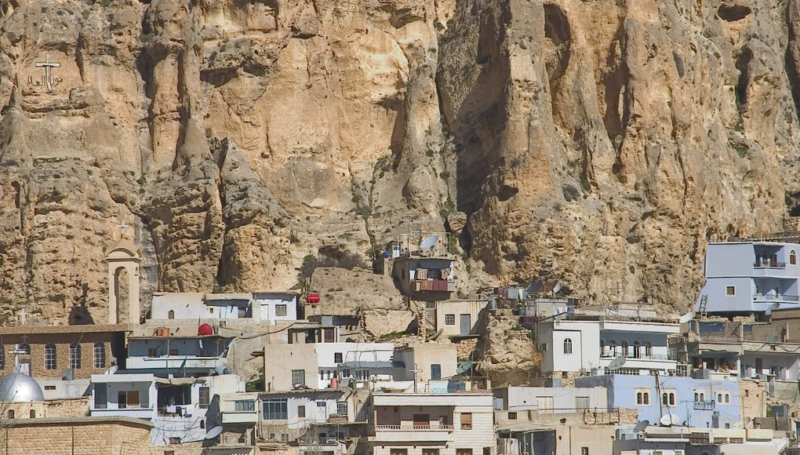
Data collection teams in Areesheh camp ©REACH/2018
Ongoing conflict since late 2016 has led to widespread displacement across northeast Syria, forcing an estimated 570,000 residents of Deir-ez-Zor and Raqqa governorates from their homes to date. Conflict has subsided in recent months and many displaced civilians have returned to their homes, though an estimated 70,000 remain in formal managed camps and informal sites. In early 2018, these sites continue to see in parallel arrivals and departures of both Syrian Internally Displaced People (IDPs) and refugees fleeing conflict in Iraq.
Since REACH initial assessment, November 2017, camp population numbers have changed significantly, with an unknown impact on humanitarian conditions and resident’s needs. In order to provide updated information to humanitarian actors, REACH conducted the second in a series of multi-sector mapping and profiling assessments in eight managed camps and two informal sites across northeast Syria. Data was collected between 20 February and 5 March 2018, through household surveys and camp management interviews.
Overall the assessment found that although residents in all camps and sites are accessing some form of humanitarian assistance, the ability of IDPs and refugees to access services and meet basic needs varies greatly between camps.
Protection issues are a major concern, with children being particularly vulnerable. Residents in Al Hol refugee camps, Ein Issa and Areesheh witness the highest prevalence of early marriage and child labour. Freedom of movement is reportedly limited for Al Hol, Mabruka and Areesheh camp residents, with those in Ein Issa reporting greater freedom of movement into the nearby town to access services.
Health services remain a gap: whilst some services are present in all camps barring Twahina, residents report that these are insufficient to meet their needs as they commonly lack qualified staff, equipment and medicine. Seeking alternative health services requires residents to leave camps, which is not always permitted. For those who are given permission, the cost of transportation and treatment commonly prevents them from accessing needed services.
As found in the previous assessment, access to education continues to remain a significant challenge across all assessed camps and sites. Whilst the established sites of Newroz, Roj and Al Hol have higher levels of education services, the remaining sites only offer primary-level education and consequently education rates are lower for older children. Twahina site has no formal education services at all. Where education facilities are present, complaints were reported about insufficient space for children, lack of trained staff and concerns about the spread of diseases such as measles. In particular, Twahina site lags behind other camps and sites and requires the greatest levels of humanitarian intervention and assistance.
In addition to the above findings, challenges remain in other sectors such as WASH, livelihoods, food security and shelter, which highlight the need for greater levels of assistance and service provision to camps and sites residents. Given the dynamic nature of displacements in northeast Syria, REACH will continue to collect regular information on these camps and sites, informing local and international aid actors’ response priorities and aid delivery.
Please access REACH’s Northeast Syria Camp and Informal Site Profiles from March 2018 here.
Please find previous Camp and Informal Site Profiles from November 2017 at these links: Al Hol, Areesheh, Ein Issa Extension, Ein Issa, Mabruka, Newroz, Roj, Twah.









